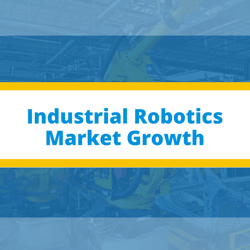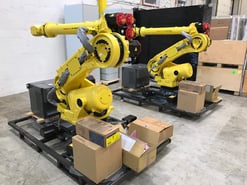 As technology becomes more prevalent, machines are now being used to build other machines. Most of the robots produced are shipped to various factories where they play a key role in the manufacturing of cars, laptops, and other equipment. It has been reported by Loup Ventures that as more people are swayed towards gadgets, the market for industrial robots is bound to grow over 175 percent over the next decade.
As technology becomes more prevalent, machines are now being used to build other machines. Most of the robots produced are shipped to various factories where they play a key role in the manufacturing of cars, laptops, and other equipment. It has been reported by Loup Ventures that as more people are swayed towards gadgets, the market for industrial robots is bound to grow over 175 percent over the next decade.
But the dynamic is going to change as well. The driver of this growth won’t consist primarily of industrial arms joining car parts as they have been for decades. Instead, a new generation of robots is taking over that is smarter, more compact, and much more collaborative than the traditional industrial robot. These collaborative robots will account for a large percentage of robots sold in future decades throughout industries. To compare, collaborative robots today only account for 3 percent of industrial robots.

Collaborative robots are smaller compared with traditional robots and are studded with sensors, helping them react to their surroundings. For example, when handling material near a human, the collaborative robot adjusts to use the appropriate amount of force to avoid incidents. One may think that these robots would cost a fortune, but the fact is they are cheaper than traditional robots. Collaborative robots cost between $25000–$45000 while traditional robots cost somewhere around $100,000.
Automotive manufacturers take the lion’s share of industrial robots in the world, but as robots get cheaper and smarter, Loup Ventures predicts electronics manufacturing would also have similar demand numbers. This year, industrial robots’ market value could increase by 13 percent to approximately $14 billion. By 2025, this number could inflate to $33.8 billion, almost tripling the demand, thus making way for operations to get more efficient and reliable across the industrial spectrum.
With the cheaper price tag and the string of benefits they possess, collaborative robots may open the doors to new innovations and technologies in manufacturing plants and workspaces. And with the predicted growth in robotics, especially collaborative robots, it’s certainly a field to invest in and pay attention to.
Premier Automation is a Robotics Value Provider for ABB Robotics and an Authorized System Integrator for Fanuc Robotics. They design and implement automatic robotics systems for industrial OEM and End User customers.



.png?width=600&name=Photography%20Email%20Header%20(2).png)
